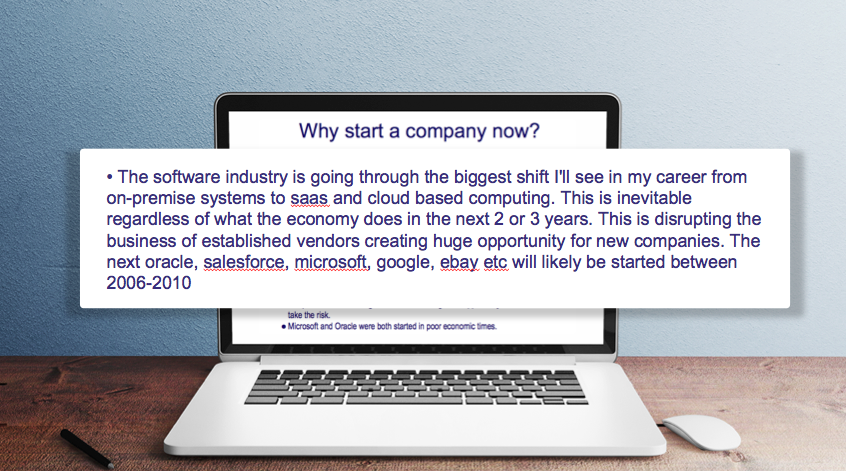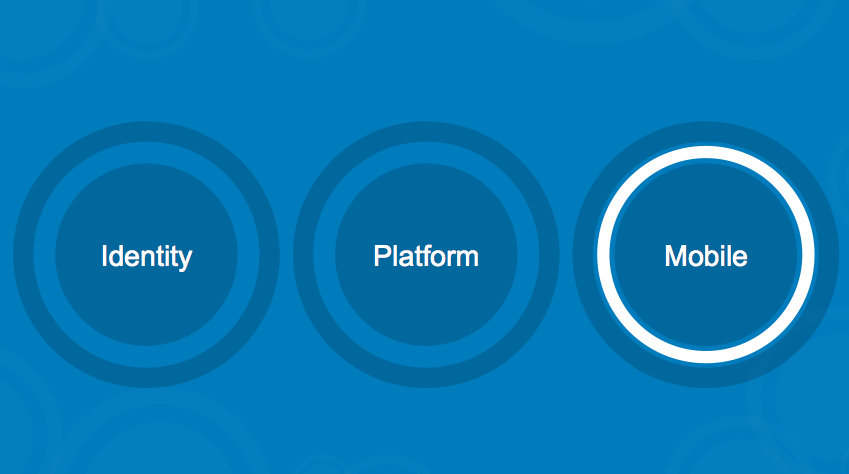Connecting the Enterprise: Bringing Identity and Mobility Management Together
When I presented my wife with a PowerPoint entitled, “Proposal to Move to a New Job Starting a New Company (Why I’m Not Crazy)” a little over five years ago, I started off by explaining how cloud computing was changing the face of the enterprise and disrupting the business of established vendors, creating huge opportunity for new companies. I told her the next Oracle or Microsoft would be built in the next four or five years – and I wanted to be part of it.
 Fast forward to today and the shift to cloud and mobile has changed the way we do business even more than I could have predicted. When Frederic and I founded the company (then called SaaSure) in 2009, we wanted to make it easier for people to connect to their cloud applications. Mobile wasn’t prevalent – Frederic and I both had BlackBerrys. Now, we, like 97% of Fortune 500 companies, use iPhones and access their work from its native apps.
Fast forward to today and the shift to cloud and mobile has changed the way we do business even more than I could have predicted. When Frederic and I founded the company (then called SaaSure) in 2009, we wanted to make it easier for people to connect to their cloud applications. Mobile wasn’t prevalent – Frederic and I both had BlackBerrys. Now, we, like 97% of Fortune 500 companies, use iPhones and access their work from its native apps.
Our original vision – to securely connect any combination of applications, devices and people – hasn’t changed since, but the world definitely has. The new world is hybrid in nature, and not just when it comes to on-premises and cloud, but with iPhones and Androids, Box and Dropbox, Lenovos and iPads, Oracle and Salesforce.com. Today, we have 2,000+ organizations, 4,000+ applications, 6+ million people and 16+ million devices in our network, but the nature of our hybrid world has made it so we can always do more.
That’s why earlier today we unveiled a series of new offerings to 1) securely connect more people and apps, 2) simplify and accelerate the development of cloud and mobile apps and, most importantly, 3) make mobile apps and devices as easy to manage and secure as web apps on PCs.
Securely Connect More People and Apps with MFA
As persistent attacks increase, strong authentication capabilities have never been so necessary. With enhancements to our MFA solution, Okta Verify, and the introduction of cloud provisioning SDKs, we’re enabling enterprises to easily implement more flexible authentication processes for employee -- or customer-facing apps – increasing security for IT and, at the same time, making it easier for users everywhere to connect to those apps. This is something we’ve always done and are only improving.
For more information, visit: https://www.okta.com/company/okta-verify-enhances-multi-factor-authentication-MFA.html
Accelerating the Development (and Adoption) of Cloud and Mobile Apps
 We’re also making it easier for developers and ISVs to build our identity layer right into their applications and solutions with our new Developer Edition. I firmly believe that every company is becoming a software company. That means they have to be able to build great apps and ship them quickly. With Developer Edition, we're removing a critical barrier to innovation (being in the authentication business, I can tell you authentication is complex and time-consuming) so companies can get apps out the door more quickly and securely. We already have a few enterprises taking advantage of Developer Edition, including Adobe, Advent, Informatica, Rotary International and ServiceSource. All are building customer solutions that leverage our identity platform, helping us connect even more applications while freeing up their resources so they can invest in their product and customers.
We’re also making it easier for developers and ISVs to build our identity layer right into their applications and solutions with our new Developer Edition. I firmly believe that every company is becoming a software company. That means they have to be able to build great apps and ship them quickly. With Developer Edition, we're removing a critical barrier to innovation (being in the authentication business, I can tell you authentication is complex and time-consuming) so companies can get apps out the door more quickly and securely. We already have a few enterprises taking advantage of Developer Edition, including Adobe, Advent, Informatica, Rotary International and ServiceSource. All are building customer solutions that leverage our identity platform, helping us connect even more applications while freeing up their resources so they can invest in their product and customers.
Clearly, we have applications covered. For more information, visit: https://www.okta.com/company/okta-announces-developer-edition-adobe-creative-cloud.html
Introducing Okta Mobility Management
Devices have historically been more difficult to figure out. The shift to loosely coupled devices and use of native apps introduced a new set of challenges for businesses – challenges that solutions architected for on-premises and company-owned devices haven’t been able to address. Well, we think we’ve got figured it out with Okta Mobility Management (OMM).
The offering marks our entrance into the $4 billion Enterprise Mobility Management market, which has traditionally focused on managing devices, similar to the way desktops used to be managed on-premises. Not anymore. Our customers have told us that they need the users to be managed. That’s why we’ve started with the user – first with identity and now by adding capabilities to manage the devices they use. We know we can secure and manage devices the same way we do with cloud apps – delivering a consistent experience across all devices, while giving IT end-to-end control.
Let me give you an example. A lot of our customers use Okta to automate provisioning through our integration with Workday. When a new employee comes on, we automate the provisioning of all their apps based on what’s in Workday. (And when that employee leaves the company, we automatically de-provision their apps.) OMM builds on this – provisioning and deprovisioning native mobile apps to devices, without affecting the employee’s personal apps or data. The customer gets everything they need to work, right on their device and IT’s job is easier.
What’s more, we’re delivering OMM as a service (the same way we do with our identity platform), priced on a per user/per month basis with no need for hosting or maintenance fees. With support for unlimited devices, OMM increases IT efficiency, improves mobile security and enables greater user productivity than any standalone solution for identity or mobility management. It’s a win-win.
For more information, visit: https://www.okta.com/company/okta-mobility-management-solution-device-applications-security.html
Connecting Everything
Frederic and I founded Okta to accelerate the adoption of cloud apps by making them more accessible and secure. Since we started out, we’ve seen applications, devices and data become increasingly complex and fragmented.
That’s not the way it has to be.
With identity and enterprise mobility management – and Okta – we can take those fragmented pieces of the enterprise and bring them all together, connecting everyone and everything needed to get work done.

